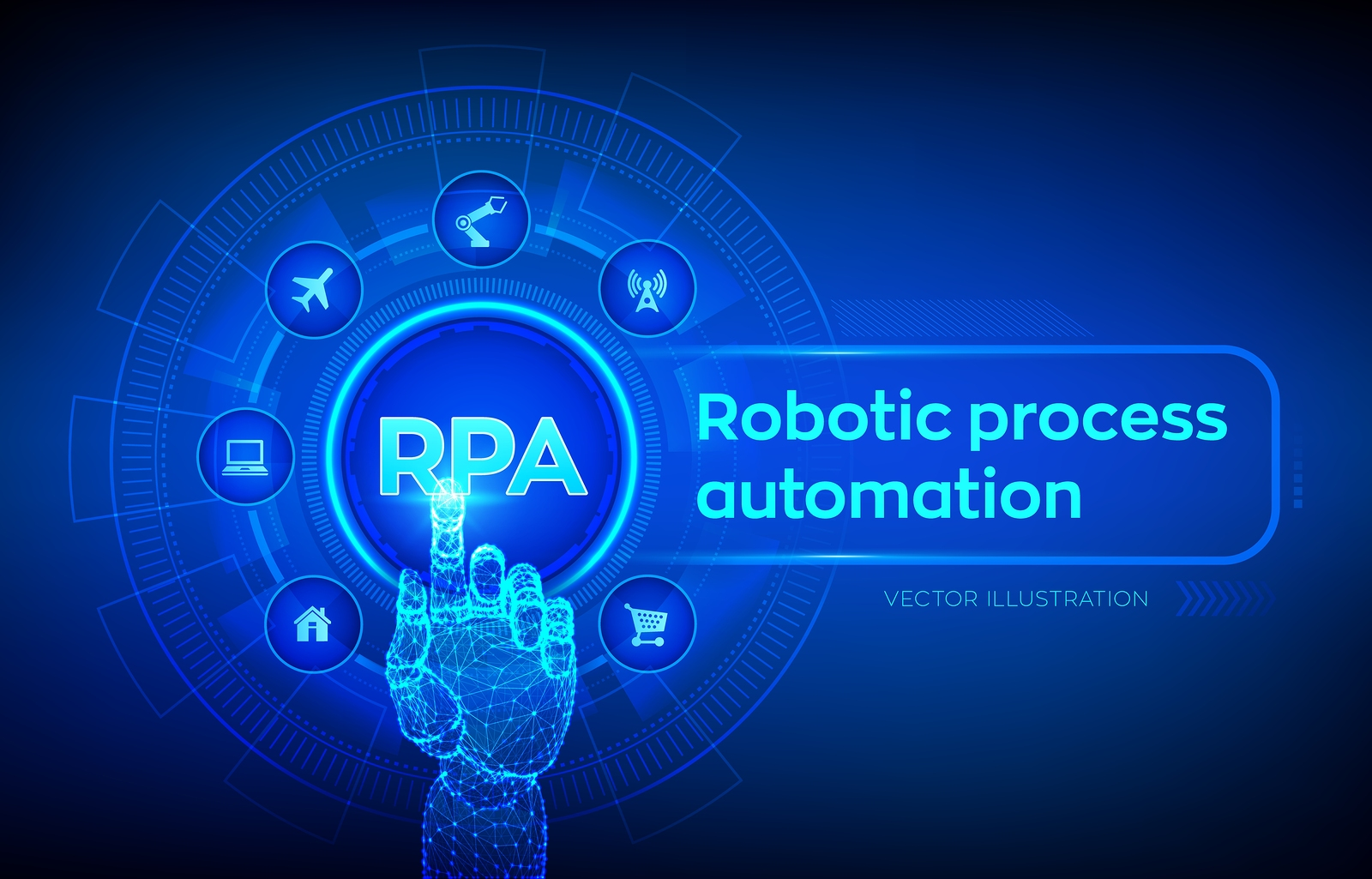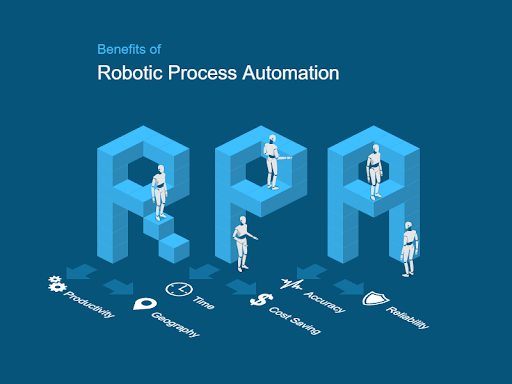Robotic process automation (RPA) is increasingly enjoying the favor of the enterprise leaders for streamlined software development, operational efficiency and cost advantages. Thanks to RPA the enterprise software projects can automate a multitude of common development tasks working based on rules. This creates more room for the developers to take care of more valuable tasks. Apart from these advantages many enterprises and digital product development companies also prefer RPA for the express purpose of automating processes by introducing advanced technologies such as artificial intelligence (AI) and machine learning (ML).
So, in more than one way RPA has proved to be valuable for enterprise software projects. Here through this blog post we are going to explain the definition, benefits, some pitfalls and shortcomings and the best practices to introduce RPA in software projects.
What Is Robotic Process Automation (RPA)?
Robotic Process Automation (RPA) is software application to automate multitude of tasks in enterprise environments. In the context of software development, RPA helps completing mundane, common and repetitive tasks. An RPA tool allows the enterprises to configure and interpret software applications for various tasks such as processing transactions, manipulating data, communicating with other applications and triggering responses. RPA solutions make significant impact in enterprise environments ranging from facilitating automatic email responses through bots, automating tasks in ERP systems and many others.
Key Benefits of RPA
RPA by automating tasks in enterprises enhances productivity and efficiency while reducing the staffing cost to a minimum. Thanks to the implementation of RPA, banks and financial organizations just by applying a few dozens bots can take on multitude of processes and serve millions of customer requests. Apart from allowing huge capacity enhancements with no significant cost this helps banks and financial organizations get things done with less employees.
Easy and Non-Disruptive Implementation
While these big business benefits are already well known about the bots, they can be integrated in a system without involving too much process complexity. Bots can easily be integrated in an enterprise system without causing any disruption in the present software systems that the organizations are using. On the other hand, by automating the mundane and low-key tasks the businesses can always make their processes better and more efficient.
Intelligent Automation
The RPA can further add value to the enterprises by combining the power of latest cognitive technologies such as natural language processing (NLP), speech recognition, machine learning, etc. While automation is already taking place across enterprises, intelligent automation is further widening the scope of automating tasks. Instead of only automating simple and repetitive tasks, intelligent automation with these technologies can help automating many complex and demanding tasks as well.
Faster ROI Growth
The implementation of RPA can result in a significant boost of ROI growth for businesses. We already gave several examples of companies and service providers having benefited from RPA in terms of cost competitiveness, ROI and efficiency. For example, an HR firm that used to process thousands of sick leave applications and certificates consuming several weeks of time, can now complete the entire task in just around two days with zero errors. Undoubtedly, this huge impact directly converts to great return on investment.
Better Customer Service
One of the biggest impacts of implementing RPA is the significant improvement in customer service. Apart from fast pacing the processes and reducing the human resources and cost, RPA implementation actually minimizes the errors in customer query handling and processing different service requests. Precision, timeless and higher productivity are key benefits of RPA that make your customer service better.
Some Shortcomings of RPA
In spite of the awesome advantages that RPA is widely acclaimed for, it has its shortcomings and pitfalls as well. RPA in many industries can directly impact employment and push industries to reduce their manpower. RPA according to Forrester Research can contribute to a whopping 230 million job losses which amounts to around 9% of the worldwide working population.
As of now, the implementation of hundreds of bots for automating tasks had a mixed reaction. While some industries could implement RPA easily, there are several industries that actually struggled to implement bots because of the complexities and the increasing cost. Moreover, some minor changes in the software implementation requirements can make weeks of work and efforts irrelevant.
Best Practices for RPA Implementation
In spite of all the benefits and shortcomings that we mentioned above, the value proposition of RPA neither can be written off nor can be fully agreed upon without understanding the practices that make such implementation successful. Yes, getting the value from RPA implementation largely depends upon how well you implement it in your business. Here we explain some effective tips and best practices.
Create Achievable Expectations:
While implementing RPA COOs should go slow in setting expectations and should start with the minimum basic outcomes and gradually should set expectations higher as the system scales up.
Keep Business Impact Into Consideration:
RPA is taken up by companies to achieve enhanced efficiency with reduced cost and thus to achieve better ROI. But if automation just reduces the level of customer satisfaction, this can be counterproductive. So, make sure replacing human communication with bots doesn’t compromise the quality of customer service.
Make Sure Design and Change Management is Handled Efficiently:
Many RPA implementations simply fail due to the poor bot architecture design and non-efficient management of changes that break the system flow. These two areas should be well planned in advance for professional handling.
Make Sure You Stick To The Original Objective:
While automating data management tasks, many COOs by implementing ML programs actually lose the sight of their original objective and the scope of implementation. This often results in turning the bot project for data query solving to a fully fledged ML project.
Not Planning For Obstacles:
Failing to plan the obstacles and roadblocks in implementing the RPA is another common mistake that COOs and the enterprise management should keep in mind. You need to program the bots to take care of tasks that your company needs on a priority basis. While doing so, make sure you alerts regarding a system failure at any given point of time.
Share The Excellence and Skills on RPA Implementation:
The RPA implementation is still at its nascent stage and hence there is a lot of scope for improvement and value additions. To make this value addition happen, the industries should share their expertise, implementation best practices and expert advice.
Go Slow In RPA Implementation:
finally, all of us are heading towards a more bot ruled future but just because of that we cannot allow bots to take away all non-expert jobs and human roles in organizations. The best approach is to implement the RPA slowly so that many employees can enhance their skills and acquire new relevance in a bot-powered industrial setup.
Conclusion
Since enterprise software solutions require a pretty volume of rigorous tasks focused on quality and scalable output, the bots can be highly effective in getting things done quicker while creating more room for the developers to concentrate on more important things.













